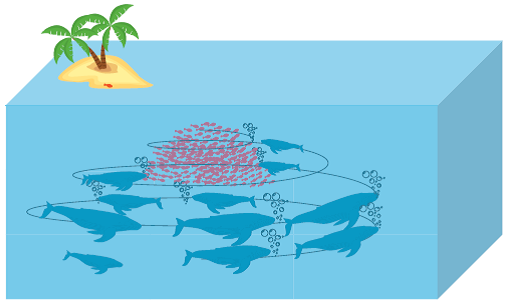Improved Whale Optimization Algorithm Based on Inertia Weights for Solving Global Optimization Problems
DOI:
https://doi.org/10.46604/aiti.2020.4167Keywords:
whale optimization algorithm, bubble-net feeding method, inertia weights, exploration and exploitation capabilitiesAbstract
Whale Optimization Algorithm (WOA) is a new kind of swarm-based optimization algorithm that mimics the foraging behavior of humpback whales. WOA models the particular hunting behavior with three stages: encircling prey, bubble-net attacking, and search for prey. In this work, we proposed a new linear decreasing inertia weight with a random exploration ability (LDIWR) strategy. It also compared with the other three inertia weight WOA (IWWOA) methods: constant inertia weight (CIW), linear decreasing inertia weight (LDIW), and linear increasing inertia weight (LIIW) by adding fixed or linear inertia weights to the position vector of the reference whale. The four IWWOAs are tested with 23 mathematical and theoretical optimization benchmark functions. Experimental results show that most of IWWOAs outperform the original WOA in terms of solution accuracy and convergence rate when solving global optimization problems. Accordingly, the LDIWR strategy produces a better balance between exploration and exploitation capabilities for multimodal functions.
References
G. Wu, R. Mallipeddi, and P. N. Suganthan, “Ensemble strategies for population-based optimization algorithms- A survey,” Swarm and Evolutionary Computation, vol. 44, pp. 695-711, February 2019.
H. Hu, Y. Bai, and T. Xu, “Improved whale optimization algorithms based on inertia weights and theirs applications,” International Journal of Circuits, Systems and Signal Processing, vol. 11, pp. 12-26, 2017.
J. Kenney and R. Eberhart “Particle swarm optimization,” Proc. IEEE Symp. International Conference on Neural Networks, IEEE Press, 1995, pp. 1942-1948.
M. Dorigo and L. M. Gambardella, “Ant colony system: a cooperative learning approach to the traveling salesman problem,” IEEE Transactions on Evolutionary Computation, vol. 1, no. 1, pp. 53-66, April 1997.
D. Karaboga and B. Basturk, “On the performance of artificial bee colony (ABC) algorithm,” Applied Soft Computing, vol. 8, no 1, pp. 687-697, February 2008.
X. S. Yang and S. Deb, “Engineering optimisation by cuckoo search,” International Journal of Mathematical Modelling and Numerical Optimisation, vol. 1, no. 4, pp. 330-343, December 2010.
W. T. Pan, “A new fruit fly optimization algorithm: taking the financial distress model as an example,” Knowledge-Based Systems, vol. 26, pp. 69-74, February 2012.
S. Mirjalili and A. Lewis, “The whale optimization algorithm,” Advances in Engineering Software, vol. 95, pp. 51-67, May 2016.
M. M. Mafarja and S. Mirjalili, “Hybrid whale optimization algorithm with simulated annealing for feature selection,” Neurocomputing, vol. 260, pp. 302-312, October 2017.
M. Črepinšek, S. H. Liu, and M. Mernik, “Exploration and exploitation in evolutionary algorithms: a survey,” ACM Computing Surveys (CSUR), vol. 45, no. 3, pp. 1-33, June 2013.
Y. Shi and R. C. Eberhart, “Parameter selection in particle swarm optimization,” Proc. International Conference on Evolutionary Programming, March 1998, pp. 591-600.
G. Kaur and S. Arora, “Chaotic whale optimization algorithm,” Journal of Computational Design and Engineering, vol. 5, no. 3, pp. 275-284, January 2018.
K. Lei, Y. Qiu, and Y. He, “A new adaptive well-chosen inertia weight strategy to automatically harmonize global and local search ability in particle swarm optimization,” Proc. IEEE Symp. 2006 1st International Symposium on Systems and Control in Aerospace and Astronautics (ISSCAA), January 2006, pp. 977-980.
J. Lu, H. Hu, and Y. Bai, “Radial basis function neural network based on an improved exponential decreasing inertia weight-particle swarm optimization algorithm for AQI prediction,” Abstract and Applied Analysis, vol. 2014, pp. 1-9, July 2014.

Published
How to Cite
Issue
Section
License
Submission of a manuscript implies: that the work described has not been published before that it is not under consideration for publication elsewhere; that if and when the manuscript is accepted for publication. Authors can retain copyright in their articles with no restrictions. is accepted for publication. Authors can retain copyright of their article with no restrictions.
Since Jan. 01, 2019, AITI will publish new articles with Creative Commons Attribution Non-Commercial License, under The Creative Commons Attribution Non-Commercial 4.0 International (CC BY-NC 4.0) License.
The Creative Commons Attribution Non-Commercial (CC-BY-NC) License permits use, distribution and reproduction in any medium, provided the original work is properly cited and is not used for commercial purposes.







